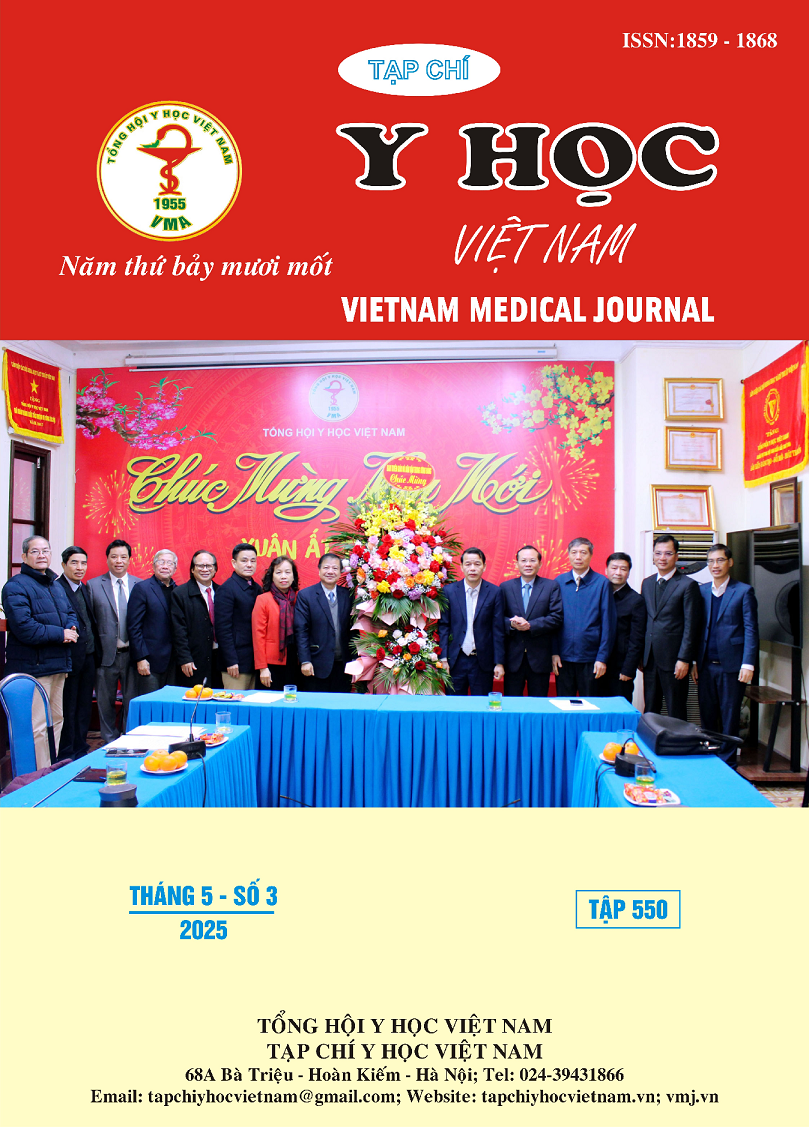CLINICAL, PARACLINICAL CHARACTERISTICS AND TREATMENT IN PATIENTS WITH ACUTE DECOMPENSATED HEART FAILURE
Main Article Content
Abstract
Background: Acute decompensated heart failure (ADHF) is a common clinical condition requiring hospitalization and intensive treatment. Understanding its clinical, paraclinical characteristics, and treatment practices is essential for improving patient management in Vietnam. Objective: To describe the clinical, paraclinical characteristics, and treatment of hospitalized ADHF patients. Methods: A prospective and retrospective cohort study was conducted on 223 ADHF patients admitted from January 2022 to September 2024. Data were collected and analyzed using SPSS 25.0. Results: The median patient age was 67 years, with 57.4% aged ≥65 years. Common comorbidities included dyslipidemia (72.2%), hypertension (68.6%), and atrial fibrillation (42.2%). The leading precipitating factors were arrhythmias (26.3%), infections (25.4%), and non-adherence to treatment (25.0%). The most frequent symptoms were dyspnea (84.3%), peripheral edema (50.7%), and pulmonary rales (53.4%), with 51.6% of patients classified as NYHA III at admission. Paraclinical findings showed anemia in 46.6% of patients, eGFR <60 mL/min/1.73 m² in 49.7%, and reduced left ventricular ejection fraction (LVEF) in 57.4%. Guideline-directed medical therapy at discharge was widely applied, with RAAS inhibitors (79.8%), beta-blockers (81.2%), SGLT2 inhibitors (77.6%), and MRAs (76.2%). Notably, 68% of patients with reduced LVEF received all four foundational therapies. Conclusion: ADHF patients had a high burden of comorbidities, severe symptoms at admission, and received treatment following guidelines. Optimizing medical therapy may improve ADHF management and outcomes.
Article Details
Keywords
Acute decompensated heart failure, clinical characteristics, paraclinical findings, treatment
References
2. Văn ĐH, Lưu TH, Lương MT, Nguyễn ĐH, Vũ KT. Nghiên cứu một số yếu tố tiên lượng tử vong ngắn hạn ở bệnh nhân suy tim cấp tại Bệnh viện Đa khoa Hùng Vương. Tạp chí tim mạch học Việt Nam. 2019;88:74-82.
3. Nguyễn QT, Nguyễn HA, Đinh TQ, Nguyễn HH. Đặc điểm và kết cục ngắn hạn của người bệnh nhập viện vì suy tim mất bù cấp tại Bệnh viện Nhân dân Gia Định. Tạp chí y học Việt Nam. 2024;542(3):227-231.
4. Nguyễn QNH, Lê ĐT, Nguyễn VT, Nguyễn TY, Phạm TTH, Bùi THQ. Tỷ lệ và các yếu tố liên quan tới tái nhập viện hoặc tử vong ở người bệnh suy tim cấp tại bệnh viện thống nhất. Tạp chí y học Việt Nam. 2022;511(2):246-252.
5. He W, Jia J, Chen J, et al. Comparison of prognostic value of red cell distribution width and NT-proBNP for short-term clinical outcomes in acute heart failure patients. Int Heart J. 2014;55(1):58-64. http://www.ncbi.nlm.nih.gov/pubmed/24463920.
6. Nguyễn ĐK, Trương PH. Đặc điểm lâm sàng, cận lâm sàng bệnh nhân suy tim cấp nhập viện tại Bệnh viện Chợ Rẫy. Tạp chí y học Việt Nam. 2024;542(1):381-386.
7. Nguyễn HN, Nguyễn TD. Nghiên cứu đặc điểm lâm sàng , cận lâm sàng và đánh giá kết quả điều trị bệnh nhân suy tim mất bù cấp bằng thang đo chất lượng cuộc sống KCCQ. Tạp chí tim mạch học Việt Nam. 2021;93:158-164.
8. D’Amario D, Rodolico D, Delvinioti A, et al. Eligibility for the 4 Pharmacological Pillars in Heart Failure With Reduced Ejection Fraction at Discharge. J Am Heart Assoc. 2023;12(13): e029071. doi:10.1161/JAHA.122.029071


